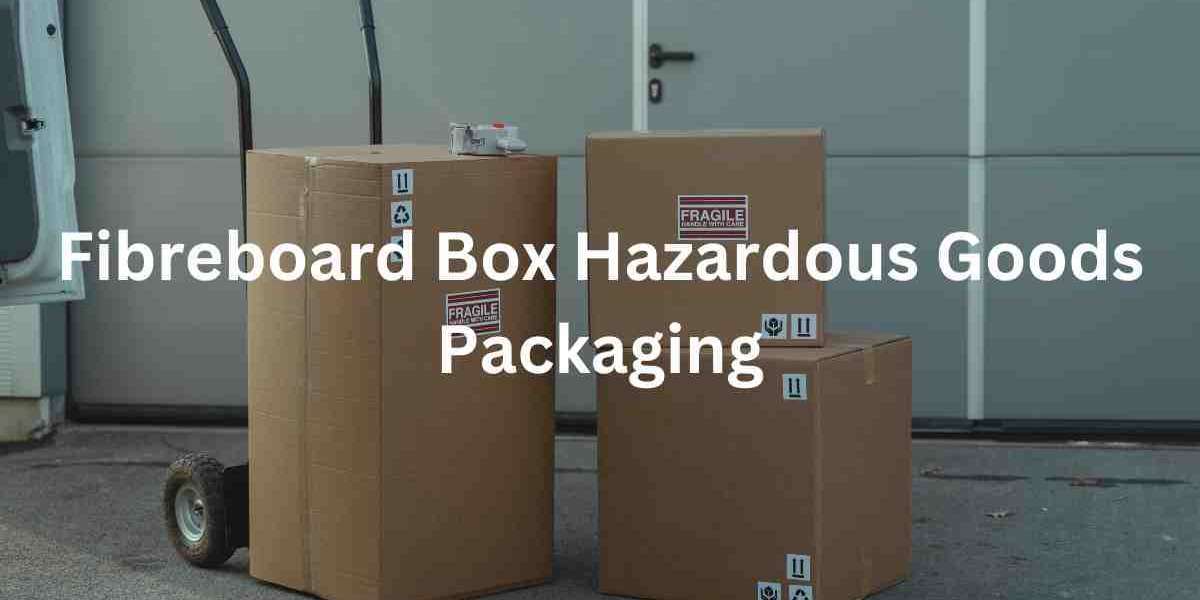Fibreboard Box Hazardous Goods Packaging are commonly used as packaging materials for various products, including hazardous goods. These boxes are made from wood pulp and are designed to provide a sturdy and protective layer to the products packed inside. However, when it comes to hazardous goods packaging, fibreboard boxes must meet certain standards and requirements to ensure the safety of the people handling and transporting them.
Hazardous goods, also known as dangerous goods, are products or substances that pose a significant risk to human health, safety, or the environment. These goods can include chemicals, batteries, explosives, radioactive materials, and other potentially harmful substances. Proper packaging of hazardous goods is crucial to prevent accidents, spills, and contamination during transportation and storage.
One of the key factors in hazardous goods packaging is selecting the appropriate packaging material. Fibreboard boxes are a popular choice due to their strength, durability, and affordability. However, it is important to ensure that the fibreboard boxes used for hazardous goods packaging meet the necessary standards and regulations.
The International Air Transport Association (IATA) and the International Maritime Organization (IMO) have established guidelines for packaging hazardous goods for air and sea transport. These guidelines provide detailed instructions for the design, construction, and testing of fibreboard boxes used for hazardous goods packaging.
According to IATA and IMO regulations, fibreboard boxes used for hazardous goods packaging must be capable of withstanding a series of tests to ensure their strength and durability. These tests include the drop test, compression test, and stacking test.
The drop test involves dropping the fibreboard box from a certain height onto a hard surface to simulate the effects of a fall during transport. The box must not show any signs of leakage or damage that could compromise the safety of the goods inside.
The compression test involves subjecting the fibreboard box to a certain amount of pressure to simulate the weight of other packages during transport. The box must not show any signs of deformation or collapse that could compromise the safety of the goods inside.
The stacking test involves stacking multiple boxes on top of each other to simulate the weight of other packages during transport. The boxes must not show any signs of deformation or collapse that could compromise the safety of the goods inside.
In addition to these tests, fibreboard boxes used for hazardous goods packaging must also meet specific labeling and marking requirements. The boxes must be clearly labeled with the appropriate hazard warning labels and markings, including the UN number, proper shipping name, and hazard class.
Fibreboard boxes used for hazardous goods packaging must also be designed with specific closure and sealing requirements to prevent leaks or spills during transport. The closures must be designed to prevent accidental opening or tampering, and must be capable of withstanding the rigors of transport.
It is important to note that the regulations and requirements for hazardous goods packaging may vary depending on the type of goods being transported, the mode of transport, and the destination country. It is the responsibility of the shipper to ensure that the packaging materials used for hazardous goods comply with all applicable regulations and standards.
In conclusion, fibreboard boxes are a popular choice for hazardous goods packaging due to their strength, durability, and affordability. However, it is crucial to ensure that the fibreboard boxes used for hazardous goods packaging meet the necessary standards and regulations established by IATA and IMO. Proper packaging of hazardous goods is crucial to prevent accidents, spills, and contamination during transportation and storage, and can help ensure the safety of the people handling and transporting these goods.














